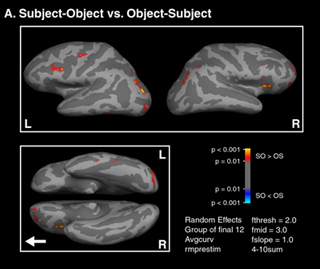Course Description
This course will address some fundamental questions regarding human language: (1) how language is represented in our minds; (2) how language is acquired by children; (3) how language is processed by adults; (4) the relationship between language and thought; (5) exploring how language is represented and processed using …
This course will address some fundamental questions regarding human language: (1) how language is represented in our minds; (2) how language is acquired by children; (3) how language is processed by adults; (4) the relationship between language and thought; (5) exploring how language is represented and processed using brain imaging methods; and (6) computational modeling of human language acquisition and processing.
Course Info
Learning Resource Types
notes
Lecture Notes

BOLD signal activations for center-embedded structures (e.g., “The juice that the child spilled stained the rug.”) compared to right-branching structures (e.g., “The child spilled the juice that stained the rug.”). (Image by Prof. Edward Gibson.)










